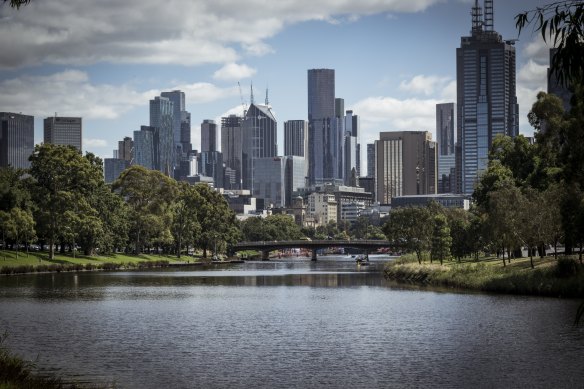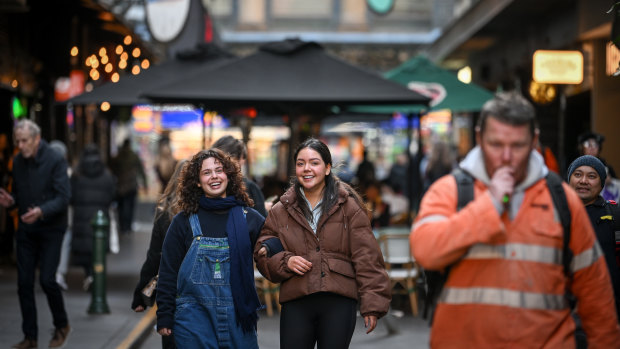
Melbourne regains bragging rights on Economist’s annual liveability index
June 21, 2023Save articles for later
Add articles to your saved list and come back to them any time.
Once declared the world’s most liveable city for seven straight years, Melbourne is now third on the list again as Australian cities bounce back up the global rankings following the pandemic lockdowns.
Improved healthcare scores – which hurt Melbourne’s ranking during COVID-19 waves – helped move the city up from 10th spot, while Sydney moved from 13th to 4th.
Melbourne is heading back towards its previously title of the world’s most liveable city.Credit: Chris Hopkins
The Economist Intelligence Unit’s Global Liveability Index, released on Thursday, ranked Perth and Adelaide equal 12th (up from 32nd and 30th, respectively) and Brisbane 16th (up from 27th).
Victoria’s capital was ranked the world’s most liveable city for seven years straight until 2017 and was number two in the last pre-pandemic year of 2019.
Lord Mayor Sally Capp said third spot showed Melbourne could bounce back from anything, after the pandemic pulled it down the index.
“From the most locked-down city to the world’s third-most liveable city is pretty darn good,” she said.
Vitoria Hronopoulos and Veronica Pena Negrette are living their best lives in Australia’s best city.Credit: Eddie Jim
“It’s cute to see Sydney nipping at our heels, and we’ll leverage this competition to push us to do better, work harder and achieve our rightful position at the top once again.”
Austria’s capital Vienna retained its 2022 top ranking to again come out on top in 2023. Denmark’s capital Copenhagen was once again ranked second.
Melbourne’s culture and environment set it apart from Sydney in the five categories assessed. Melbourne scored 95.8 in the culture category, while the NSW capital got 94.4.
Among the other four categories – stability, healthcare, education and infrastructure – both cities were even.
Veronica Pena Negrette and Vitoria Hronopoulos, both 21, recently graduated from an acting course at the Victorian College of the Arts. Hronopoulos said she moved from Adelaide to Melbourne “where everything’s happening”.
Both women spent the first years of their adult lives unable to enjoy what they say makes Melbourne great – so they’re making up for it.
“I love the bar culture,” Hronopoulos said, a sentiment echoed by her friend. “There’s so many in Brunswick, there’s so many in the city,” Pena Negrette said.
“Since coming out of lockdown, it felt like I was finally being released into the world.”
Both women agreed Sydney had something to offer in terms of chasing their acting dreams, but that Melbourne had more to offer for now.
“There’s a big theatre scene here,” Hronopoulos said.
Pena Negrette was more practical: “It’s definitely cheaper than Sydney.”
It’s a living.Credit: Matt Golding
In New Zealand, Wellington (ranked 23rd) and Auckland (ranked 10th) saw the biggest increase – jumping 35 and 25 places respectively.
Asia-Pacific cities accounted for eight of the top 10 fastest-climbing capitals this year, as economies recovered from the pandemic.
Upasana Dutt, head of the Liveability Index, said the shift towards normality after the pandemic was boding well for global liveability in 2023.
She said education ranking had improved as children returned to schools and there was significantly less burden on hospitals and healthcare systems.
Global stability was the only category to have seen an overall decline in its rankings since last year, Dutt said.
She said stability scores had fallen in many cities due to civil unrest, inflation and economic conditions putting pressure on liveability.
“These will continue to be a risk for the future, with much of the economic and sociopolitical headwinds likely to continue into 2024,” she said.
“All of this suggests that stability scores in our Liveability Index are unlikely to recover quickly.”
The Morning Edition newsletter is our guide to the day’s most important and interesting stories, analysis and insights. Sign up here.
Most Viewed in National
From our partners
Source: Read Full Article





